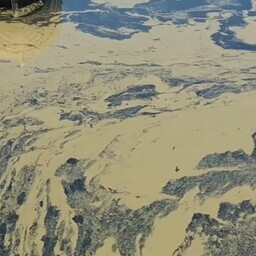Terviseameti Põhja regionaalosakond võttis 2. juulil
veeproovi
Harku järve supluskohast. Proovi tulemused näitasid, et järvevees on
sinivetikaid
. Leiti ka
mõõdukas kogus ohtlikke
sinivetikaid
"
data-translations='{"en":"moderate amount of dangerous blue-green algae","ru":"умеренное количество опасных сине-зеленых водорослей","uk":"помірна кількість небезпечних синьо-зелених водоростей"}'
data-article-title=""
data-article-id="3f01b8a5-cf21-4a84-bd7e-0066b7d59e27"
aria-label="Save phrase"
title="Salvesta fraas">
-->
.
veeproovi
Tõlge fraasile: veeproovi
EN
water sample
sinivetikaid
Tõlge fraasile: sinivetikaid
EN
blue-green algae
sinivetikaid
Tõlge fraasile: sinivetikaid
EN
blue-green algae
sinivetikaid
Tõlge fraasile: sinivetikaid
EN
blue-green algae
mõõdukas kogus ohtlikke
sinivetikaid
sinivetikaid
Tõlge fraasile: sinivetikaid
EN
blue-green algae
Tõlge fraasile: mõõdukas kogus ohtlikke
sinivetikaid
sinivetikaid
Tõlge fraasile: sinivetikaid
EN
blue-green algae
EN
moderate amount of dangerous blue-green algae
Terviseamet ütleb, et Harku järves ujumine ei ole soovitatav.
Soojad ilmad tõstavad veetemperatuuri
. See aitab
sinivetikatel kiiresti levida
. Terviseamet soovitab olla ettevaatlik supelrandades. Jälgi rannavalve lippe.
Pese end pärast ujumist puhta vee ja seebiga
. Oluline on jälgida, et
väikelapsed ja lemmikloomad ei neelaks järvevett
.
Soojad ilmad tõstavad veetemperatuuri
Tõlge fraasile: Soojad ilmad tõstavad veetemperatuuri
EN
Warm weather raises water temperature
sinivetikatel kiiresti levida
Tõlge fraasile: sinivetikatel kiiresti levida
EN
blue-green algae spread quickly
Pese end pärast ujumist puhta vee ja seebiga
Tõlge fraasile: Pese end pärast ujumist puhta vee ja seebiga
EN
Wash yourself with clean water and soap after swimming
väikelapsed ja lemmikloomad ei neelaks järvevett
Tõlge fraasile: väikelapsed ja lemmikloomad ei neelaks järvevett
EN
small children and pets do not swallow lake water
Inimene võib
sinivetikate toksiinidest haigestuda
, kui neelab saastunud vett. Mürgistuse sümptomid võivad olla nagu gripp: naha ja silmade ärritus, halb enesetunne, kõhulahtisus, palavik, nohu ja köha, lihasvalud, huulte kipitus ja lõhenemine ning tasakaaluhäired. Kui kahtlustad mürgistust,
pöördu perearsti poole
või helista numbrile 16662.
sinivetikate toksiinidest haigestuda
Tõlge fraasile: sinivetikate toksiinidest haigestuda
EN
get sick from blue-green algae toxins
pöördu perearsti poole
Tõlge fraasile: pöördu perearsti poole
EN
contact your family doctor
Tõsiseid mürgistusi on täiskasvanutel harva.
Suuremas ohus on väikesed lapsed
, eakad ning lemmikloomad. Koer võib haigestuda, kui lakub karva pärast ujumist sinivetikatega vees.
Suuremas ohus on väikesed lapsed
Tõlge fraasile: Suuremas ohus on väikesed lapsed
EN
Small children are at greater risk
Enne vette minekut veendu vee puhtuses
. Kui vesi on
kollakasroheline
, sisaldab helbeid ja kallas on kaetud rohelise massiga, võib olla
sinivetikaid
. Kui helbed on väga väikesed ja ei jää oksa külge, on ka see märk sinivetikatest.
Enne vette minekut veendu vee puhtuses
Tõlge fraasile: Enne vette minekut veendu vee puhtuses
EN
Before entering the water, make sure it is clean
kollakasroheline
Tõlge fraasile: kollakasroheline
EN
yellowish-green
sinivetikaid
Tõlge fraasile: sinivetikaid
EN
blue-green algae
The Northern Regional Department of the Health Board took a water sample from the swimming area of Harku Lake on July 2. The results of the sample showed that there are blue-green algae in the lake water. A moderate amount of dangerous blue-green algae was also found.
The Health Board says that swimming in Harku Lake is not recommended. Warm weather raises the water temperature. This helps blue-green algae spread quickly. The Health Board advises caution at swimming beaches. Follow the beach guard flags. Wash yourself with clean water and soap after swimming. It is important to ensure that small children and pets do not swallow lake water.
A person can become ill from the toxins of blue-green algae if they swallow contaminated water. Symptoms of poisoning may resemble the flu: skin and eye irritation, malaise, diarrhea, fever, runny nose and cough, muscle pain, lip itching and cracking, and balance disorders. If you suspect poisoning, contact your family doctor or call 16662.
Serious poisonings are rare in adults. Small children, the elderly, and pets are at greater risk. A dog can become ill if it licks its fur after swimming in water with blue-green algae.
Before entering the water, make sure the water is clean. If the water is yellowish-green, contains flakes, and the shore is covered with a green mass, there may be blue-green algae. If the flakes are very small and do not stick to a branch, this is also a sign of blue-green algae.

